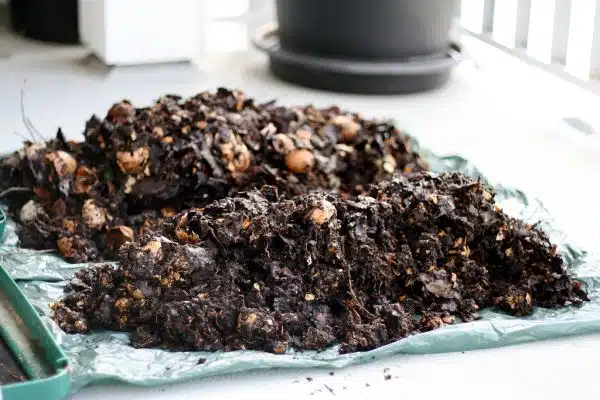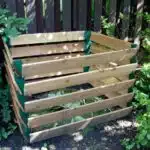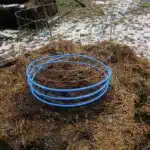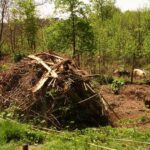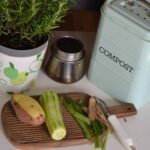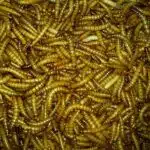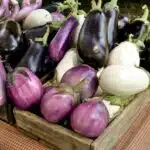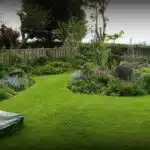Composting is a simple and effective way to recycle organic waste and enrich the soil in your garden. By converting kitchen scraps, lawn clippings, and other natural materials into nutrient-rich compost, you can improve the health of your plants and reduce the amount of waste that ends up in landfills. However, many gardeners are unsure how to use compost effectively or may be hesitant to try it for fear of making mistakes.
In this article, we will explore the benefits of composting and provide tips on how to use compost in your garden. We will cover topics such as selecting a compost bin, creating a balanced mix of materials, and applying compost to different types of plants. Whether you are an experienced gardener or just starting out, this guide will help you make the most of your compost and create a healthier, more sustainable garden.
Understanding The Benefits Of Composting
Composting is an essential practice in gardening that helps improve soil health and plant growth. Compost tea, a liquid fertilizer derived from compost, is considered a valuable nutrient source for plants. It contains beneficial microorganisms that aid in the breakdown of organic matter and promote soil fertility. By using compost tea, gardeners can increase the yield and quality of their crops while reducing the need for synthetic fertilizers.
One of the significant benefits of composting is its positive impact on soil health. Composting helps improve soil structure by increasing its water-holding capacity, porosity, and aeration. It also boosts microbial activity in the soil, which enhances nutrient availability to plants. Furthermore, composting reduces soil erosion and pollution by decreasing the need for chemical fertilizers and pesticides.
Composting offers numerous advantages for gardeners looking to grow healthy plants sustainably. It provides a cost-effective way to recycle organic waste while improving soil health through nutrient-rich compost tea. Moreover, it promotes environmental stewardship by reducing waste sent to landfills and minimizing the use of harmful chemicals in gardening practices. In the next section, we will discuss different types of composting systems that you can use to start your own composting journey.
Types Of Composting Systems
A wise man once said, “Composting is a symphony performed by nature.” Indeed, composting can be seen as a harmonious blend of organic matter and microorganisms working together to create a nutrient-rich soil amendment for your garden. There are various types of composting systems available, and each has its unique features.
The two main types of composting systems are vermicomposting and hot composting. Vermicomposting involves using worms to break down the organic matter, while hot composting relies on high temperatures to decompose the materials quickly. Vermicomposting is an ideal method for those who want to compost indoors as it does not produce any offensive odors. Hot composting requires more maintenance but allows you to create compost in just a few weeks.
Indoor composting methods are perfect for those with limited space or cold climates where outdoor compost piles may freeze. Indoor methods include vermicomposting, which can be done in small containers under the kitchen sink, or bokashi fermentation, which uses microbes to break down food scraps quickly. When choosing an indoor method, consider the amount of space you have available and how much time you can dedicate to maintenance.
Transition: Now that we’ve discussed the different types of composting systems available let’s move on to choosing the right bin for your needs.
Choosing The Right Composting Bin
To effectively use compost in your garden, you need to choose the right composting bin. There are various types of bins available, but the most popular ones are DIY composting and composting with worms. Both methods have their advantages and disadvantages, so it’s essential to consider your needs and preferences before deciding which one to use.
DIY composting involves using a container made from recycled materials, such as wooden pallets or plastic bins. This method is ideal for those who have limited space and want to recycle kitchen scraps and yard waste. However, it requires more effort than other methods as you need to turn the pile regularly to aerate it properly. Additionally, it can take up to a year for the compost to be ready for use.
Composting with worms, also known as vermicomposting, involves using red wigglers or other types of earthworms to break down food scraps into nutrient-rich soil. This method is ideal for those who want a quick turnaround time as worm castings can be produced in just a few weeks. However, it requires special attention as worms require specific conditions to thrive. You also need a specialized bin that allows air circulation and drainage while preventing pests from getting in.
Next up is setting up your composting system by selecting the ideal location, choosing the right ingredients, and maintaining proper moisture levels.
Setting Up Your Composting System
- Composting is an effective way to reduce waste and fertilize a garden.
- To begin composting, it is important to gather materials such as leaves, grass clippings, and food waste.
- When choosing a location for a composting system, it should be in an area with good drainage and access to sunlight.
- The composting system should be built with materials that are durable and rot-resistant such as wood or plastic.
- The system should be well ventilated to allow for airflow and should be constructed in a manner that facilitates turning and aerating the compost.
- To ensure the composting system is successful, it is important to monitor the temperature, moisture, and air circulation of the compost regularly.
Gathering Materials
Composting is a sustainable and eco-friendly way to provide your garden with the nutrients it needs while reducing the amount of waste that ends up in landfills. To set up your composting system, you’ll need to gather some essential materials. First, you’ll need a compost bin or an area in your garden where you can pile up your organic waste. You can purchase a compost bin or make one yourself using materials such as wood pallets or wire mesh.
Next, you’ll need to gather the right ingredients for the composting process. The key components of a successful compost include nitrogen-rich greens such as grass clippings, vegetable scraps, and coffee grounds; and carbon-rich browns such as leaves, twigs, and shredded paper. It’s important to maintain a good balance between these two types of materials to ensure that your compost breaks down properly.
Lastly, make sure to have some tools on hand to help with the process. A pitchfork or shovel can be used for turning over your compost pile regularly which helps accelerate the decomposition process. Gloves are also useful for handling organic waste without getting too dirty. With these materials gathered, you’ll be ready to start creating nutrient-rich soil for your garden in no time!
Choosing A Location
To set up an efficient composting system, it is essential to choose the right location. Before deciding where to place your compost bin or pile, consider soil preparation and sun exposure. First, the site should have access to good-quality soil that can absorb excess moisture and nutrients from the compost pile. A well-draining location will prevent the accumulation of water and ensure a healthy decomposition process. Additionally, picking a spot with direct sunlight allows for faster decomposition and helps keep your compost pile dry.
When choosing a location for your composting system, be mindful of nearby structures such as buildings or fences that may block airflow. Proper airflow is essential to ensure that oxygen reaches the microorganisms responsible for breaking down organic matter in the pile. Therefore, it’s best to avoid placing your bin in enclosed areas with minimal ventilation. Furthermore, avoid placing your compost pile near trees or shrubs whose roots may invade and disrupt your pile.
Lastly, consider accessibility when selecting a location for your composting system. You’ll want to pick a spot that’s easy to get to when you need to add materials or turn over the pile regularly. If you plan on using a wheelbarrow or other tools regularly, make sure there is enough space around the bin or pile for maneuvering them freely. By carefully selecting a suitable location for your composting system based on soil preparation, sun exposure, ventilation and accessibility – you’ll be able to create nutrient-rich soil easily while reducing waste!
Building The Composting System
Now that you have chosen the perfect location for your composting system, the next step is to build it. There are many DIY composting options available that are budget-friendly and easy to construct. Building your compost bin or pile allows you to customize it according to your needs and preferences.
One of the most popular DIY composting systems is a three-bin system made from wooden pallets or wire fencing. This design allows you to have one bin for adding fresh materials, one bin for active decomposition, and one bin for finished compost. It’s important to choose materials that are untreated and safe for organic gardening. Another option is a tumbling composter, which is ideal for those with limited space as it can be rotated easily and takes up less room than a traditional pile.
When building your composting system, ensure that there’s enough airflow and drainage to support the decomposition process. A well-constructed bin or pile helps regulate moisture levels, prevents pests from entering, and reduces unpleasant odors. Additionally, make sure that your composting system is accessible and easy to maintain. You’ll want to be able to turn over the pile regularly and add new materials without any hassle.
Building a composting system may seem daunting at first, but with the right tools and resources, it can be an enjoyable project that benefits both your garden and the environment. Whether you opt for a three-bin system or a tumbling composter, remember to follow best practices in creating nutrient-rich soil while reducing waste!
Creating The Perfect Composting Mix
A composting mix is like a symphony orchestra where every instrument plays an important role to create a harmonious and beautiful piece of music. In the same way, creating the perfect composting mix requires an understanding of the different components that make up your compost. Composting materials can be divided into two categories: nitrogen-rich or green materials and carbon-rich or brown materials. The ideal mixing ratio for these two components is 1:2, respectively.
Nitrogen-rich materials include fresh grass clippings, fruit and vegetable scraps, and coffee grounds. These materials are crucial in providing nutrients that promote the growth of microorganisms that break down the organic matter in your compost pile. Carbon-rich materials, on the other hand, include fallen leaves, straw, and wood chips. These items provide structure and absorb excess moisture in your compost pile. A well-balanced combination of these two types of materials will ensure that your composting process runs smoothly.
Mixing ratios play a significant role in determining the quality of your compost. Too much nitrogen-rich material can lead to a smelly, slimy mess while too much carbon-rich material results in slow decomposition rates. It is essential to keep adding both types of materials as you build up your compost pile until it reaches a temperature between 130-140°F indicating that decomposition has started. Once this happens, you can start turning over your pile regularly to aerate it further and speed up the process.
As you continue building up your compost pile with the right mixing ratios, you’ll soon have a nutritious soil amendment that will benefit all your garden plants’ health. In our next section, we’ll discuss what to compost and what not to compost to ensure that you’re only adding healthy ingredients into your mix and avoiding potential problems down the line.
What To Compost And What Not To Compost
Composting is an effective way to reduce waste and improve soil health. Organic materials such as fruits, vegetables, eggshells, and coffee grounds can be added to compost to produce a nutrient-rich soil amendment. Non-organic materials such as plastic, metal, and chemicals should not be added to compost. Proper aeration, moisture levels, and carbon/nitrogen ratios are important to ensure successful composting. Turning the compost pile regularly will help provide adequate aeration and mix nutrients. Covering the compost pile will help maintain the ideal moisture levels. When producing compost for use in gardens, it is important to avoid adding animal waste or diseased plants.
What To Compost
Composting is an excellent way to enhance the quality of soil and plants in your garden. However, before embarking on this journey, it’s essential to understand what materials can be composted. Organic materials such as leaves, grass clippings, vegetable peels, fruit scraps, coffee grounds and filters are great choices for composting. These materials contain all the essential nutrients that plants need to grow healthy and strong.
It’s important to maintain a balance of carbon-rich “brown” and nitrogen-rich “green” materials when composting. Brown materials such as dried leaves or straw provide the carbon needed for decomposition while green materials like grass clippings or kitchen waste provide nitrogen. The ideal composting ratios are 2-3 parts brown material to 1 part green material. This balance ensures that the compost breaks down efficiently without producing unpleasant odors.
In conclusion, knowing what to compost is essential for successful gardening through composting. By choosing appropriate organic materials and maintaining a balance between carbon-rich and nitrogen-rich elements, you can create nutrient-dense soil that will support healthy plant growth. So start collecting those kitchen scraps and yard waste today to produce your very own rich compost!
What Not To Compost
Making compost is a great way to enhance the growth of plants in your garden. However, some composting mistakes can harm the soil and plants. It’s crucial to know what materials should not be added to compost piles to avoid these mistakes.
Firstly, it’s essential not to add meat, dairy products or oily foods in the compost pile. These materials can attract pests and rodents, and may even produce unpleasant odours. Secondly, avoid adding pet waste or human waste as they contain harmful pathogens that can contaminate the soil. Lastly, do not include synthetic chemicals or treated wood as they could have toxic substances that will harm plants instead of helping them grow.
Composting mistakes are common among novice gardeners who may think that all organic matter can be used for composting. However, harmful composting materials can lead to poor quality of soil and unhealthy plants. Therefore, it’s important to remember that certain items like meat products, pet waste and synthetic chemicals should not be added to your compost pile. By avoiding these mistakes, you’ll create rich and nutrient-dense soil that will support healthy plant growth while keeping your garden free from contaminants.
Composting Tips
Composting is an excellent way to enrich the soil in your garden and provide essential nutrients for your plants. However, it’s crucial to know what materials can be composted and how to do it correctly. Composting materials should be organic matter like food scraps, leaves, grass clippings, and garden waste. These items are rich in nitrogen and carbon and provide the necessary nutrients for the decomposers that break down the compost.
When creating a composting schedule, it’s best to mix green and brown materials. Green materials include fresh grass clippings, fruit and vegetable scraps, while brown materials include dry leaves, twigs, and wood chips. For optimal decomposition, maintain a balanced ratio of 50:50 between green and brown materials. It’s also important to regularly turn the pile to aerate it properly and ensure that all the materials get enough moisture.
To speed up the composting process, consider adding a compost accelerator or activator that contains microorganisms that help break down organic material faster. However, this is not necessary as long as you follow proper composting techniques. With these tips in mind, you’ll be able to create nutrient-rich soil that will support healthy plant growth while reducing waste in your household or community.
How To Maintain Your Compost
Maintaining your compost is crucial for the success of your garden. Turning compost is an essential step in the process as it helps to aerate the mixture, which encourages decomposition and prevents unpleasant odors from developing. The frequency of turning depends on the size of your compost pile – smaller piles require more frequent turning than larger ones.
Balancing carbon and nitrogen levels is another key aspect to consider when maintaining compost. Carbon-rich materials include dry leaves, straw, and sawdust, while nitrogen-rich materials include grass clippings, vegetable scraps, and coffee grounds. It’s important to maintain a balance between these two elements as too much nitrogen can lead to a smelly compost pile, while too much carbon will slow down decomposition. A good rule of thumb is to maintain a roughly equal ratio of carbon to nitrogen.
To avoid unpleasant odors from developing in your compost pile, ensure that you are not adding any meat or dairy products or pet waste. These items do not break down well and can attract unwanted pests such as rats or flies. Additionally, make sure that the moisture level in your compost is not too high or low – aim for a damp sponge consistency. By following these tips for maintaining your compost pile, you’ll be on your way to producing nutrient-rich soil that will help your garden thrive.
As you continue on your journey towards successful gardening through using composting practices, there may be some common issues that arise along the way. Troubleshooting common composting problems such as pests or slow decomposition can be frustrating but with patience and persistence can be overcome. Let’s explore some solutions so you can keep on track towards healthy soil and vibrant plants.
Troubleshooting Common Composting Problems
- Troubleshooting odors from composting can be a complex issue, as it is likely to be caused by an imbalance of carbon and nitrogen in the composting material.
- To address this issue, gardeners must ensure that their compost is properly aerated and contains a balanced mix of green and brown materials.
- Compost not heating up is another common problem encountered by gardeners, often caused by too much water or not enough oxygen.
- To remedy this, gardeners should adjust the moisture content of their compost and regularly turn it to increase oxygen levels.
Troubleshooting Odors
As you begin to compost, it is not uncommon to experience unpleasant odors emanating from your compost pile. These odors are usually a sign of issues with the composting process and can be addressed by identifying their root causes. It is important to take swift action when troubleshooting these problems to prevent any potential negative impact on your garden.
One of the most common reasons for foul odors in your compost pile is an overgrowth of anaerobic bacteria, which thrive in oxygen-deprived environments. This can be eliminated by ensuring proper aeration in your compost heap through regular turning or using a specially designed aerator tool. Additionally, it is important to avoid adding too much high-nitrogen material such as food scraps or grass clippings at once, as this can lead to excessive bacterial growth and bad smells.
Another factor that could contribute to unpleasant smells in your compost heap is moisture levels that are either too high or low. If your compost appears too wet and has a strong, sour odor, it may be necessary to add dry materials such as leaves or shredded paper to soak up excess moisture. Similarly, if your pile seems too dry and does not break down efficiently, adding water can help activate the decomposition process and reduce odors.
In conclusion, maintaining optimal conditions for composting requires vigilance and attention to detail. By properly managing the moisture levels and eliminating harmful bacteria from your compost heap, you can avoid unpleasant smells and produce nutrient-rich soil amendments that will benefit your garden for years to come.
Compost Not Heating
Composting is a natural process that involves breaking down organic waste into nutrient-rich soil amendments. However, despite the benefits of composting, it is not uncommon to encounter problems such as compost not heating up. This can be frustrating for gardeners who have invested time and effort into creating their compost heap. Fortunately, there are alternative composting methods and troubleshooting techniques that can help address this issue.
One possible reason why your compost pile is not heating up could be insufficient nitrogen content. Nitrogen is an essential component for bacterial growth, which drives the decomposition process in a compost heap. Without enough nitrogen, the microbes responsible for breaking down organic matter will not be able to function optimally. Therefore, it is important to add high-nitrogen materials such as grass clippings or vegetable scraps to your compost heap regularly.
Another potential cause of a non-heating compost pile could be inadequate moisture levels. Microbes need water to survive and thrive, and without enough moisture, they may become dormant or die off completely. Conversely, if there is too much moisture in your compost heap, it can lead to anaerobic conditions and bad odors. To troubleshoot this problem, you may need to add water or dry materials depending on whether your pile is too wet or dry.
In conclusion, troubleshooting common composting problems requires patience and experimentation. If you find that your compost pile is not heating up as expected, try adding more nitrogen-rich materials or adjusting the moisture levels accordingly. Additionally, consider alternative methods such as vermicomposting or bokashi fermentation if traditional composting methods are not working for you. With persistence and perseverance, you can successfully create rich soil amendments that will benefit both your garden and the environment.
Harvesting Your Compost
Are you tired of buying expensive fertilizers that don’t seem to work? Are you looking for a more sustainable solution to your garden needs? Look no further than your own compost bin! Harvesting your compost is an exciting moment in the composting process, as it means you are ready to reap the benefits of your hard work.
Before harvesting, make sure your compost bin placement is optimal. The ideal location for a compost bin is in a shaded area with good drainage. If you don’t have access to a shaded spot, consider using a tarp or other cover to protect your bin from direct sunlight. Another way to speed up the composting process is by adding worms to your bin. Composting with worms, also known as vermicomposting, can help break down organic matter quicker and produce high-quality compost.
Once your compost is ready for harvest, use the following table as a guide:
| Step | Action | Notes |
|---|---|---|
| 1 | Stop adding new material | Allow the existing material to finish breaking down |
| 2 | Remove finished compost from bottom of bin | Use a shovel or pitchfork |
| 3 | Return unfinished material back into bin | Mix with new material |
Harvesting and using your own compost not only saves money but also reduces waste in landfills. Plus, it’s an easy way for gardeners to practice sustainable gardening techniques. In the next section, we will discuss how to apply your freshly harvested compost in the garden.
Applying Compost To Your Garden
- Preparing compost involves collecting organic materials, such as plant matter and food waste, and allowing these materials to decompose over time.
- Applying compost to a garden can be done by adding it to the soil and tilling it in, as well as using it as a surface mulch.
- To ensure the compost is of the highest quality, it is best to use a combination of green and brown material and mix it regularly.
- When applying compost to a garden, it is important to create an even layer so the compost can be evenly distributed throughout the soil.
- Once compost is applied to a garden, it should be monitored regularly to ensure the temperature is regulated and the moisture content is adequate.
- Additionally, it is important to maintain the compost pile by adding new material and aerating it to create the optimal conditions for decomposition.
Preparing Compost
Composting is an excellent way to provide your garden with nutrient-rich soil. When preparing compost, it is important to understand the benefits of composting and the ingredients needed for successful decomposition. Composting benefits are numerous, including providing beneficial microorganisms that help plants grow and combating plant diseases.
To prepare compost, start by gathering organic materials such as vegetable scraps, fruit peels, leaves, and grass clippings. Avoid adding meat or dairy products as they can attract pests. The key to successful composting is to balance carbon-rich materials (such as dry leaves) with nitrogen-rich materials (such as kitchen scraps). This will ensure that the pile heats up and breaks down efficiently.
Once you have all of the necessary ingredients, layer them in a pile or bin and add water periodically to keep the mixture moist. Turn the pile regularly to aerate it and speed up decomposition. In approximately 6-12 months, your compost should be ready to use in your garden beds or pots. Applying compost annually ensures healthy plant growth and improves soil quality without relying on chemical fertilizers.
In conclusion, preparing compost requires knowledge of its benefits and proper ingredients for successful decomposition. By following these simple steps, you can create nutrient-rich soil that will enhance your gardening experience while also benefiting the environment. Incorporating compost into your gardening practices is an easy way to serve both your plants and our planet.
Applying Compost
Applying compost to your garden is an essential step in ensuring that your plants thrive and grow healthily. However, there are best practices that you should follow to maximize the benefits of compost application. Firstly, ensure that the compost has decomposed entirely before using it on your plant beds or pots. This will prevent plants from competing with the microorganisms responsible for breaking down the compost.
Another common mistake to avoid is applying too much compost at once, which can lead to waterlogging and nutrient imbalances in the soil. It is recommended to use a 1-2 inch layer of compost annually and mix it into the topsoil to distribute nutrients evenly. Creative uses for compost in your garden include creating a mulch layer around shrubs and trees or adding it as a top dressing for potted plants.
Troubleshooting application issues may involve identifying pests that may be attracted by unbalanced carbon-nitrogen ratios or addressing drainage problems caused by compacted soil. By following these best practices, avoiding common mistakes, and exploring creative uses for compost in your garden, you can maximize its benefits and promote healthy plant growth while reducing environmental impact.
Maintaining Compost
Maintaining compost is just as important as applying it to your garden. Compost is a living organism that requires proper care and maintenance to ensure its effectiveness. One crucial factor in maintaining compost is the placement of the compost bin. It should be placed in a well-drained area with good air circulation and partial shade. Avoid placing it near buildings or trees, which can restrict airflow and cause excess moisture.
Composting in small spaces can also be challenging, but it is still possible with proper techniques. Consider using a tumbling composter or worm bin, which are compact and efficient for small gardens or balconies. It is essential to maintain the right amount of moisture, temperature, and carbon-nitrogen ratio to ensure proper decomposition. Regularly turning the compost pile will increase airflow, break down materials faster, and prevent odors.
Regular maintenance of your compost pile will ensure that it remains healthy and provides rich organic matter for your plants. Keep an eye on the moisture level, occasionally adding water if needed or covering it during heavy rain to prevent oversaturation. Additionally, monitor the carbon-nitrogen ratio to avoid any imbalances that may inhibit decomposition. By following these guidelines for maintaining compost, you will have a steady supply of nutrient-rich organic matter for your garden all year round.
Composting For Different Types Of Plants
Different types of plants require different kinds of compost to thrive. Composting for herbs, for instance, requires a compost that is rich in nitrogen and potassium. Herbs are fast-growing plants that require a lot of nutrients, so adding compost to the soil can help give them the boost they need. It is important to note that herbs do not like overly wet soil, so make sure that the compost is well-drained.
Succulents, on the other hand, require a more specialized type of compost. A succulent-specific mix should be used that has a higher proportion of sand or grit than regular potting soil. This will help with drainage and prevent root rot, which can be fatal to these plants. Adding compost to succulent soil can also improve its water retention capacity and provide additional nutrients.
When it comes to using compost in your garden, it is crucial to tailor it based on your specific plants’ needs. Understanding what type of compost works best for each plant will enable you to create an environment where they can thrive. In addition to providing essential nutrients and improving soil quality, adding compost encourages beneficial microorganisms that promote healthy plant growth. Next up: Composting for vegetable gardens…
Composting For Vegetable Gardens
Composting for Different Types of Plants has shown us the importance of using compost in our gardens. However, knowing how to use compost effectively is just as crucial. One way to utilize your compost is by making compost tea. This nutrient-rich liquid can be used as a fertilizer, foliar spray, or soil amendment.
To make compost tea, simply steep a bag of finished compost in a bucket of water for 24-48 hours. After this time, strain out any solids and dilute the liquid with water until it resembles the color of weak tea. Apply this solution to your vegetable garden every two weeks during the growing season to promote healthy plant growth.
Another method for utilizing your compost in vegetable gardens is through vermicomposting. This process involves using worms to break down organic matter into nutrient-rich castings that can be added directly into your garden soil. These castings contain beneficial microorganisms and nutrients that help improve soil structure and fertility.
Incorporating vermicomposting into your vegetable garden routine can provide numerous benefits while reducing waste. Simply add kitchen scraps and other organic matter to a worm bin and let the worms do their job. Once the castings are ready, add them directly into your garden soil or use them as a top dressing around plants.
Transition: While vermicomposting is an excellent choice for vegetable gardens, it’s also important to understand how it can benefit flower gardens as well.
Composting For Flower Gardens
Composting is a natural process of breaking down organic matter into nutrient-rich soil. It’s an effective way to improve the fertility and overall health of your flower garden. Whether you’re new to gardening or an experienced gardener, composting can help you achieve a beautiful and healthy flower bed design.
Seasonal planting tips can help you decide what type of plants to grow in your flower garden. During the fall, plant bulbs for spring-blooming flowers such as tulips and daffodils. In the summer, choose annuals such as petunias, marigolds, and zinnias that thrive in warm weather. When it comes to fertilizing your flowers, using compost instead of chemical fertilizers can provide long-lasting benefits for your garden.
To use compost in your flower garden, simply spread a layer of it on top of the soil around your plants. You can also mix it into the soil before planting new flowers or adding new plants to your existing garden. Remember that composting takes time and patience, so be sure to start the process early enough to have enough compost for your seasonal needs.
- Use compost tea as a liquid fertilizer for your flowers.
- Add food waste such as coffee grounds and eggshells to your compost pile.
- Turn over the compost pile every few weeks with a pitchfork or shovel.
- Avoid adding meat or dairy products to your compost pile as they attract pests.
As you can see, there are many benefits to using compost in your flower garden. By following these seasonal planting tips and incorporating compost into your gardening routine, you’ll be well on your way to achieving a vibrant and healthy flower bed design. Up next, we’ll discuss how composting can benefit trees and shrubs in your landscape.
Composting For Trees And Shrubs
Compost is an excellent soil amendment for trees and shrubs, providing them with essential nutrients they need to thrive. Backyard composting is a great way to produce your own compost for small landscaping projects. However, when it comes to large scale landscaping projects, you may need to purchase compost from a supplier.
When using compost for trees and shrubs, it’s important to take into account the pH of the soil. Compost tends to increase soil acidity, so it’s recommended to test the pH of your soil before applying compost. If the pH is already low, consider using a different soil amendment instead of compost.
To ensure that your trees and shrubs get the maximum benefit from the compost, it’s best to apply it uniformly around their root zone. This can be achieved by spreading a layer of compost over the surface of the soil or digging it into the top few inches of soil. A useful guide for determining how much compost to use is by referring to this table:
| Tree/Shrub Diameter | Amount of Compost |
|---|---|
| 1-2 inches | 1 cubic foot per tree/shrub |
| 3-6 inches | 2 cubic feet per tree/shrub |
| 7-12 inches | 3 cubic feet per tree/shrub |
By following these guidelines, you can ensure that your trees and shrubs receive adequate nutrition through the use of compost. Remember that backyard composting is great for small projects, but larger scale landscaping projects may require purchasing from a supplier who specializes in producing large quantities of high-quality compost. With these tips in mind, you can embrace sustainable benefits through effective use of composting in your garden.
Next section topic: Conclusion: Embracing The Sustainable Benefits Of Composting
Conclusion: Embracing The Sustainable Benefits Of Composting
Composting is a sustainable practice that offers numerous benefits to gardeners and plant enthusiasts. Apart from reducing waste, composting helps to enrich soil, improve plant growth and health, and reduce the need for chemical fertilizers. Composting is also an excellent way of making use of organic materials such as food scraps, yard waste, and other biodegradable materials.
One benefit of composting is that it produces compost tea, which is a nutrient-rich liquid that can be used to nourish plants. Compost tea is easy to make by steeping compost in water for a couple of days before straining out the solids. The resulting liquid can then be added directly to the soil around plants or used as a foliar spray. Compost tea provides beneficial microorganisms and nutrients that help plants thrive.
Composting is not only useful for outdoor gardening but also indoor plants. Indoor plants require healthy soil for optimal growth and development, which can be achieved by adding compost to the potting mix. Composting indoors may seem challenging due to space restrictions, but it’s possible using small-scale worm bins or Bokashi systems. These methods allow you to recycle food scraps and other organic materials while producing high-quality compost that improves indoor air quality and supports plant growth.
In summary, embracing sustainable practices like composting has numerous benefits for gardeners and plant enthusiasts alike. From producing nutrient-rich compost tea to improving indoor air quality through indoor composting, there are many reasons why we should all consider integrating this practice into our daily lives. By doing so, we not only reduce waste but also promote healthier soils and more robust plant growth without resorting to harmful chemicals or synthetic fertilizers.
Conclusion
Composting is an essential practice for any gardener who desires to nourish their plants while being eco-friendly. The benefits of composting are numerous, including reducing waste, improving soil health, and increasing plant growth and yield. There are several types of composting systems to choose from, such as bin composting, worm composting, or trench composting.
When selecting a composting bin, consider factors such as the amount of waste generated and the available space. Setting up your compost system requires layering materials such as brown and green matter to achieve the perfect mix for decomposition. Composting mix varies depending on the type of garden you have; vegetable gardens require high nitrogen content while flower gardens need low nitrogen levels.
In conclusion, embracing sustainable practices such as composting is vital in maintaining a healthy garden ecosystem. As a horticulturist or garden expert, it is imperative to educate others on the importance of this practice and its role in environmental conservation. By creating a rhythmic flow in our writing with imagery that depicts how beneficial composting is for plants’ growth and sustainability, we can encourage more people to adopt this practice in their gardening endeavors. Let us all commit to doing our part in preserving nature by embracing the sustainable benefits of composting today!
Image Credits
- “compost” by lindsay.dee.bunny (featured)

